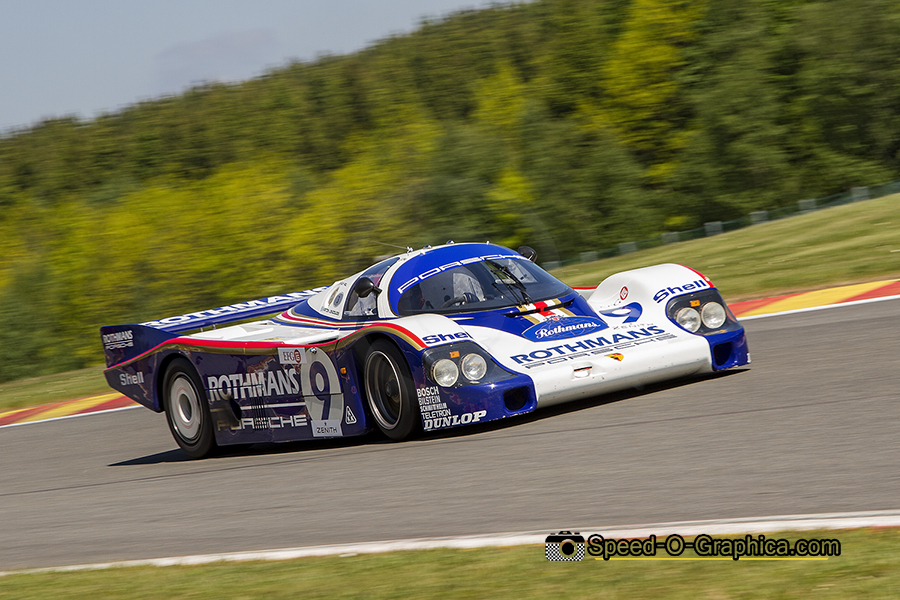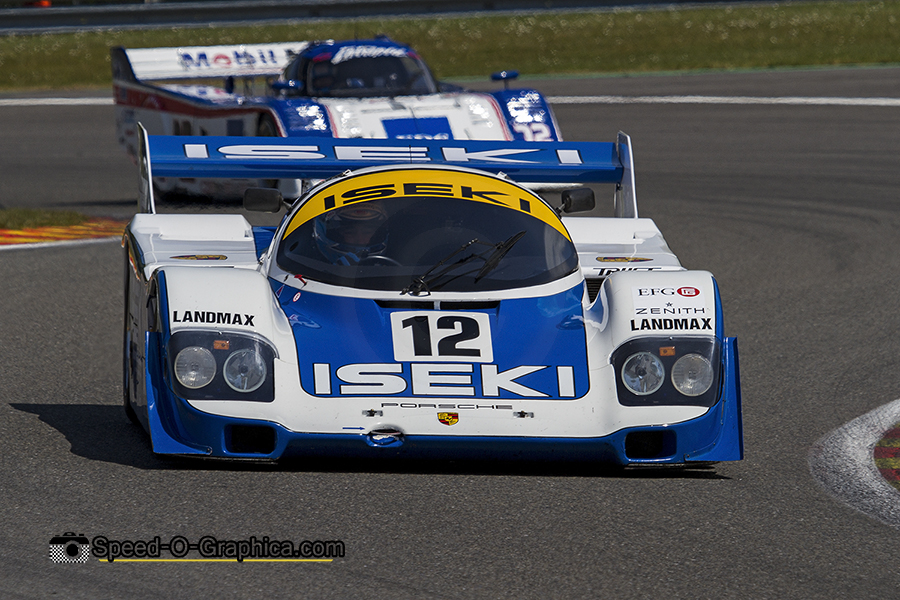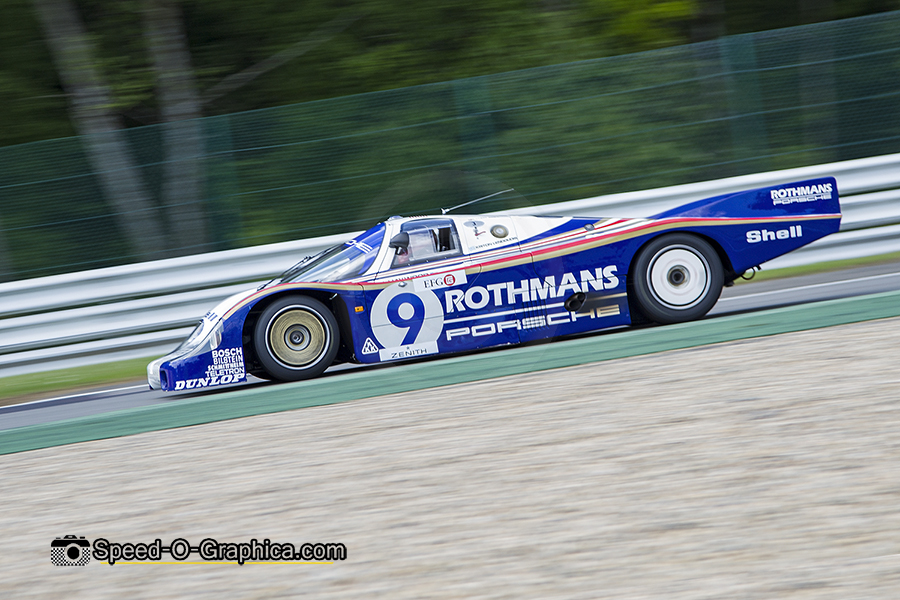Group C: The Rise and Fall of the Golden Age of Endurance Racing: Porsche 956

Pictured above is chassis 956-004 driven by Kriton Lendoudis at the Spa Classic 2014. Back in 1982 this car finished in third place at the Le Mans 24 Hours.
By Marcel Hundscheid / Speed-O-Graphica
We continue our Group C retrospective with the record-breaking Porsche 956.
Norbert Singer developed the Porsche 956 under Group C regulations featuring a monocoque chassis with ground effect. The 956 was meant as a replacement for the earlier 936, which competed in the Group 6 category.
Singer and his development team started their project in 1981, followed by the first completed prototype on 27 March 1982. Porsche opted for an air-cooled 2,649 cc four-valve twin turbo engine with two overhead camshafts, generating 640 hp at 8200 rpm. This was the same engine Porsche had used in the earlier 936/81. Singer had just a single goal, to enter the 24 Hours of Le Mans that particular year.
Only a few weeks after the cars were completed, the Rothmans-Porsche team took three 956s (chassis number 2,3 and 4) to Le Mans. On their first appearance, Porsche shocked the competition by claiming an unique 1-2-3 victory at the most important endurance race in the world.
Jacky Ickx and Derek Bell won the 1982 edition of the 24 Hours of Le Mans in their nr. 1 Porsche 956, followed by Jochen Mass and Vern Sschuppan in the nr. 2 956. Hurley Haywood, Al Holbert and Jürgen Barth completed Porsche’s triumph in the nr. 3 Porsche 956.
Besides winning Le Mans, Porsche also claimed the World Championship that year with Jacky Ickx in the 956. More successes followed with the World Championship in 1983, 1984 and 1985. Private teams such as Joest Racing, Obermaier Racing, John Fitzpatrick Racing, Richard Lloyd Racing Kremer Racing and Brun Motorsport used the 956 as a customer car from 1983.

Seen here is chassis 956-118, in fact the very last 956 that was built, driven by Russell Kempnich at the Spa Classic in 2014. This car was driven by Vern Schuppan at the All Japan Sports Prototype Car Endurance Championship in 1984.
Porsche introduced the 956B in 1984, equipped with an improved chassis and a Bosch Motronic electric system for better fuel efficiency. Between 1982 and 1984, twenty-eight 956s were built. Richard Lloyd Racing built an unofficial 29th chassis using spare parts.
As top speed on the almost six kilometer long Mulsanne Straight during the ’80s was essential, Porsche used two different rear wings designs on the 956. For Le Mans the 956 was fitted with a notably much lower and smaller rear wing. To increase down force on tighter tracks, privateer teams experimented with a front wing.
Kremer Racing and Joest Racing were privateer teams that had to wait until 1983 for their 956. To comply with the new Group C regulations both Kremer Racing and Joest Racing built new body shapes including a roof on their existing 936 replicas. Kremer Racing designated their car as CK5 01, Joest Racing’s car was designated as 936C JR005.
In 1983 Stefan Bellof drove a factory 956 to an astonishing 6:11.13 at the Green Hell. For three-and-a-half decades his crushing lap time remained the all-time record at the notorious Nordschleife.

